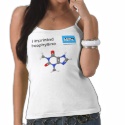|
|
Reference type: Journal
Authors: Gupta R, Kumar A
Article Title: Synthesis and characterization of sol-gel-derived molecular imprinted polymeric materials for cholesterol recognition.
Publication date: 2011
Journal: Journal of Sol-Gel Science and Technology
Volume: 58
Issue: (1)
Page numbers: 182-194.
DOI: 10.1007/s10971-010-2376-5
Abstract: The sol-gel-derived host matrices are well known for biosensor applications where various types of organic and biological molecules can be immobilized and can act as recognition elements. The molecular imprinting technology is an attractive alternative method where expensive and labile biorecognition elements can be replaced by molecular imprinted polymers (MIPs), which are capable of recognizing a target molecule of an interest. In the present study, hybrid sol-gel MIPs were synthesized in the form of crushed powder (CP) by both non-hydrolytic and hydrolytic method for cholesterol recognition. These MIPs were characterized by scanning electron microscopy (SEM), fourier transform-infrared (FT-IR), liquid chromatography-mass spectrometry (LC-MS) and nitrogen adsorption-desorption isotherm measurements. The template molecule was extracted by means of soxhlet extraction and calcination method. The cholesterol adsorption experiments were performed by using non-imprinted (NI) and extracted crushed powder (ExCP) and the percentage of adsorption was determined by measuring the residual quantity in the analyte solution using Liebermann-Burchard (L-B) reagent. The adsorption studies with non-imprinted crushed powder (NICP) showed interference with L-B reagent as well as non-specific binding between analyte molecules and silica matrix. The percentage of adsorption or rebinding was found to be higher for phenyl triethoxysilane (PhTEOS)-derived ExCP (composition 3) which was synthesized by the aqueous sol-gel processing method at low pH as compared to PhTEOS-derived (composition 1) and 3-aminopropyltriethoxysilane (APTES)-derived ExCP (composition 2) prepared by non-hydrolytic method. The reusability of used ExCP after re-extraction was also investigated. The various factors affecting rebinding of template molecules were discussed along with interference study. The study provided information on molecular imprinting of cholesterol in sol-gel matrix and highlighted the importance of characterization of MIPs before applying it for sensing applications
Template and target information: cholesterol
Author keywords: molecular imprinted polymers, metal alkoxides, sol-gel, cholesterol, Liebermann-Burchard reagent
|


 I imprinted theophylline T-shirt ball and stick
I imprinted theophylline T-shirt ball and stick







.jpg) I love MISPE Magnet
I love MISPE Magnet







 caffeine template mug ball and stick model
caffeine template mug ball and stick model






